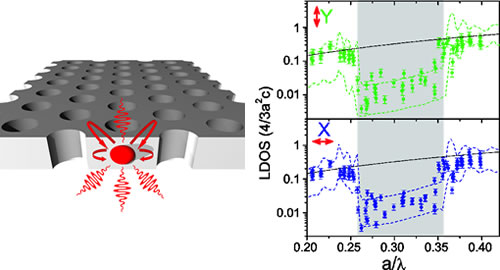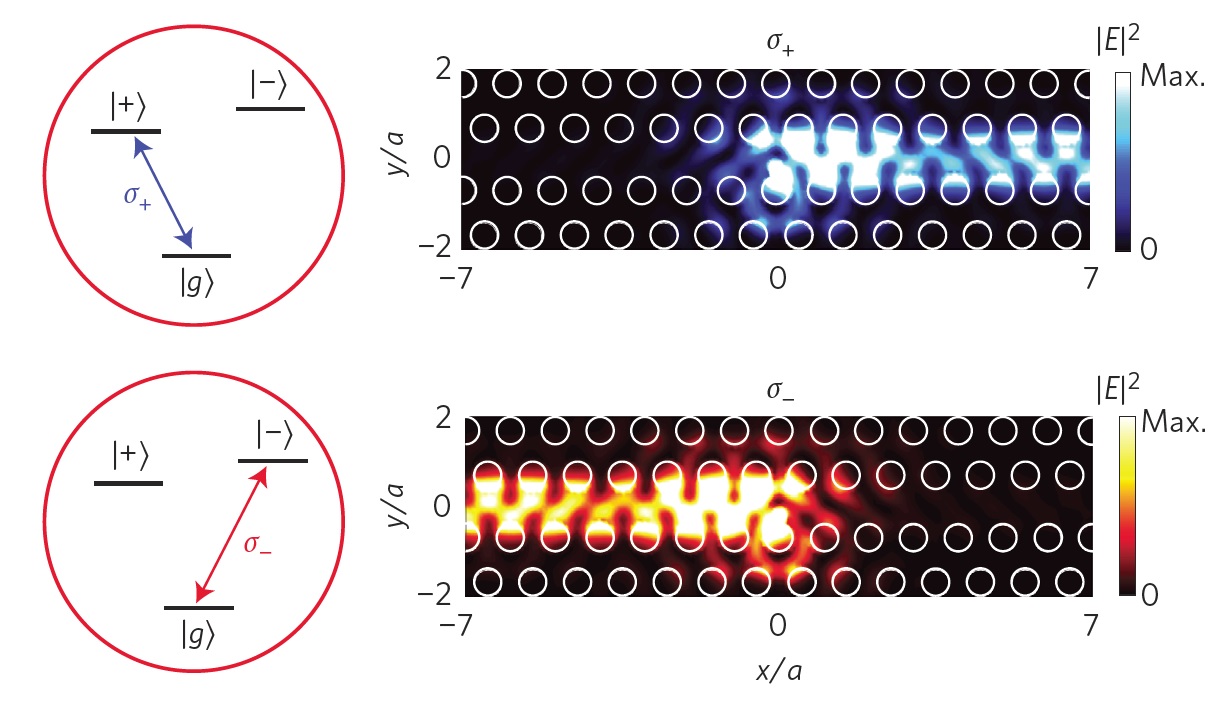Controlling quantum light-matter interaction in photonic nanostructures
Spontaneous emission of a quantum emitter depends not only on the intrinsic properties of the emitter, but also on the density of vacuum fluctuations surrounding the emitter. Photonic crystals can significantly modify the local density of optical states (LDOS) and are therefore useful for controlling the spontaneous emission of photons [1, 2]. The LDOS is highly complex in nanophotonic structures such as photonic crystals and reliable ways of extracting it are therefore essential.
We use single self-assembled InGaAs quantum dots as internal probes to map the LDOS of photonic crystal membranes [3]. By properly accounting for the role of the exciton fine structure, we can separate contributions from nonradiative recombination and spin-flip processes. We have done a systematic frequency map of the LDOS and a detailed comparison to existing theory, as shown in Fig.1. We observe inhibition factors as high as 70, which clearly demonstrates the potential of photonic crystal membranes for efficient spontaneous emission control.

More recently, we have begun exploiting the vector nature of nanophotonic light fields to control the direction, in addition to the magnitude, of emission from quantum dots. We exploit the fact that the electric fields of counter-propagating modes in waveguides have opposite helicities to couple emission from a complex valued transition dipole, such as that of the spin-states of the emitters, to a single direction as shown in Fig. 2. In fact, we have observed a directionality of single photon emission in excess of 90% [4], demonstrating that chiral emission is a viable route to non-reciprocal quantum optical circuits, spin-photon interfaces, and even quantum networks [5].

[2] P. Lodahl, A.F. van Driel, I.S. Nikolaev, A. Irman, K. Overgaag, D. Vanmaekelbergh, and W.L. Vos, Controlling the dynamics of spontaneous emission from quantum dots by photonic crystals, Nature 430, 654 (2004).
